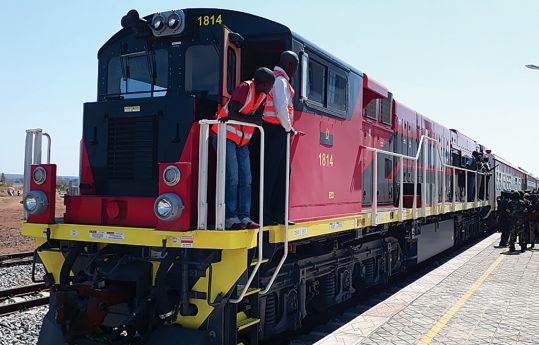Angola’s transport system is a developing but critical sector that connects its vast territory and supports its economy, especially the oil and mining industries. The transport network includes roads, railways, ports, and airports, with ongoing infrastructure improvements in recent years.
Road Transport
- Most commonly used mode of transport for goods and people.
- Over 75,000 km of roads, but only about 20% are paved.
- Major highways connect:
- Luanda (capital) to other cities like Benguela, Lubango, Huambo, and Malanje.
- Rural roads are often in poor condition, especially during the rainy season.
Public Transport:
- Includes minibuses (candongueiros), shared taxis, and buses.
- In Luanda and larger cities, urban transport is managed by companies like TCUL (Transporte Colectivo Urbano de Luanda).
Railways
Angola has three main railway lines:
- Caminho de Ferro de Luanda (CFL) – Luanda to Malanje
- Caminho de Ferro de Benguela (CFB) – Lobito to Luau (connects to DRC, key for mining exports)
- Caminho de Ferro de Moçâmedes (CFM) – Moçâmedes (Namibe) to Menongue
- Mainly used for cargo transport (minerals, fuel, construction materials).
- Passenger services are available but limited and slower compared to road travel.
Ports and Maritime Transport
Key ports on the Atlantic Ocean:
- Port of Luanda – Largest and busiest port, vital for imports/exports.
- Port of Lobito – Strategically important, connects to the Benguela Railway.
- Port of Namibe (Moçâmedes) – Growing importance for southern Angola.
These ports are essential for Angola’s oil, diamond, and general trade industries.
Air Transport
- Major international airports:
- Quatro de Fevereiro International Airport (Luanda) – Main gateway into Angola
- Catumbela Airport (Benguela)
- Lubango Airport, Huambo Airport
- TAAG Angola Airlines is the national airline, offering domestic and international flights (to Portugal, Brazil, South Africa, etc.).
- Several smaller domestic carriers operate regional flights.
River Transport
- Used in some northern and eastern provinces along rivers like the Congo and Kwanza.
- Primarily for local and informal transport in rural areas.
Challenges and Improvements
- Many transport networks were damaged during the civil war (1975–2002).
- Government and international partners have invested heavily in reconstruction:
- China, Brazil, and Portugal have helped finance and build new roads, railways, and airports.
- Angola is prioritizing transport modernization to promote tourism, trade, and regional integration.


